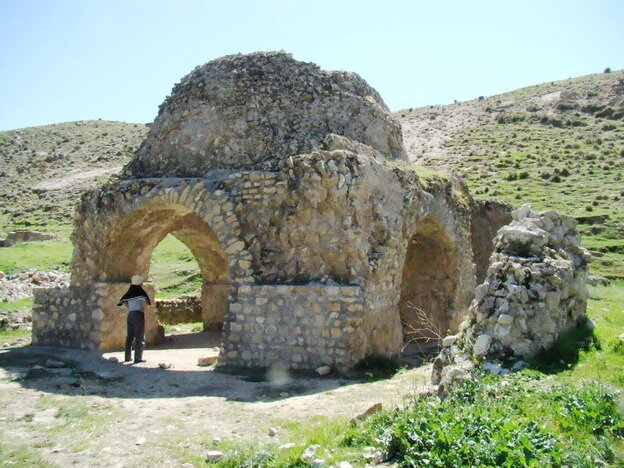Sassanid fire temple restoration work starts

TEHRAN – Work to restore Atashkadeh Siah Gol, a Sassanid era (224–651) fire temple in western Iran, has commenced, a local official said on Sunday.
Planning consent was approved earlier this year for the work with a government budget of 2 billion rials ($4,000), Ilam provinces tourism chief Farzad Sharifi said.
Located in Eyvan county of Ilam province, the property is registered on the national list for cultural heritage.
Atashkadeh Siah Gol is one of the most well-preserved fire temples constructed during the Sassanid era, the official said.
The fire temple, which is made of stone and special traditional mortar, is surmounted by a single shell dome and stands on four main pillars, the official explained.
Technically speaking, the monument is in the form of Chahar-Taq, which is an ancient square-shaped brick room surmounted by a domed roof.
According to UNESCO, the architecture of the Sassanid monuments in the property further illustrates early examples of construction of domes with squinches on square spaces, such as in the Chahar-Taq (Chahartaq) buildings, where the four sides of the square room show arched openings: this architectural form turned into the most typical form of Sassanid religious architecture, relating closely to the expansion and stabilization of Zoroastrianism under Sassanid reign and continuing during the Islamic era thanks to its usage in religious and holy buildings such as mosques and tombs.
Atashkadeh (literary meaning “house of fire”) is a Zoroastrian term for a consecrated building in which there is an ever-burning sacred fire.
As mentioned by Iranica, the temple cult of fire appears to have been instituted only in the latter part of the Achaemenian period (4th century BC), and there is no allusion to it in the Avesta, nor is any Old Pers. word known for a fire-temple.
After the Arab conquest of Persia, a different name for a fire temple came into general use among the Zoroastrians, namely Dar-e Mehr, and eventually, this entirely replaced the older terms for the Irani Zoroastrians.
In Islamic times the fire temples of Iran were all either demolished (the ruins, if any remained, having since generally disappeared), or replaced by mosques, some of which incorporated and effectively swallowed the older buildings.
The Sassanid era is of very high importance in the history of Iran. Under Sassanids, Persian architecture and arts experienced a general renaissance. Architecture often took grandiose proportions, such as palaces at Ctesiphon, Firuzabad, and Sarvestan, which are amongst the highlights of the ensemble. Apart from architecture, crafts such as metalwork and gem engraving grew highly sophisticated, yet scholarship was encouraged by the state. In those years, works from both the East and West were translated into Pahlavi, the language of the Sassanians.
AFM
Leave a Comment